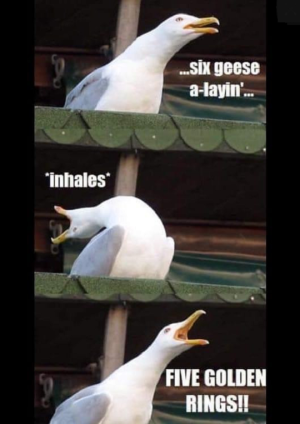You are using an out of date browser. It may not display this or other websites correctly.
You should upgrade or use an alternative browser.
You should upgrade or use an alternative browser.
Garden humor thread..
- Thread starter desertlady
- Start date
Pulsegleaner
Garden Master
- Joined
- Apr 18, 2014
- Messages
- 3,595
- Reaction score
- 7,147
- Points
- 306
- Location
- Lower Hudson Valley, New York
Actually, the area peanuts are from isn't all that hot, it's in the Andes. It just isn't all that COLD either, the Andes are one of those weird places where latitude, longitude and altitude combine to make environments were it is cool but not freezing year round. That the peanut could adapt to other places in the world is nothing short of a miracle.Peas: I am a legume. I will survive 15 degrees and only lose 1 (one) pod. :] You can count on me!
Peanuts: I am a legume. I was domesticated in an extremely hot area. One flash of 25 degrees out can kill me. I am so sorry.
Zeedman
Garden Master
And as a friend found out who just returned from time spent in the Andes, those cooler temperatures can be deceptive... because in the tropical higher altitudes, the UV is really high. She came back with really severe facial sunburn.Actually, the area peanuts are from isn't all that hot, it's in the Andes. It just isn't all that COLD either, the Andes are one of those weird places where latitude, longitude and altitude combine to make environments were it is cool but not freezing year round. That the peanut could adapt to other places in the world is nothing short of a miracle.
Pulsegleaner
Garden Master
- Joined
- Apr 18, 2014
- Messages
- 3,595
- Reaction score
- 7,147
- Points
- 306
- Location
- Lower Hudson Valley, New York
Hmm, I wonder if THAT is why all of those Native Andeans begin to get super wrinkly once they get old (those deep, tight wrinkles all over, as opposed to the looser ones we normally get). Granted, after untold thousands of years living there, they have probably adapted to the extra UV (the same way they have developed bigger lungs and more efficient oxygen absorption to deal with the thinner air,) but it still probably takes a toll eventually.And as a friend found out who just returned from time spent in the Andes, those cooler temperatures can be deceptive... because in the tropical higher altitudes, the UV is really high. She came back with really severe facial sunburn.
Carol Dee
Garden Master
Carol Dee
Garden Master
Zeedman
Garden Master
I'd say this qualifies as one of those "Be careful what you wish for!" times.
flowerbug
Garden Master
Hmm, I wonder if THAT is why all of those Native Andeans begin to get super wrinkly once they get old (those deep, tight wrinkles all over, as opposed to the looser ones we normally get). Granted, after untold thousands of years living there, they have probably adapted to the extra UV (the same way they have developed bigger lungs and more efficient oxygen absorption to deal with the thinner air,) but it still probably takes a toll eventually.
they wear hats. colorful and interesting hats.
Pulsegleaner
Garden Master
- Joined
- Apr 18, 2014
- Messages
- 3,595
- Reaction score
- 7,147
- Points
- 306
- Location
- Lower Hudson Valley, New York
They do, but hat's are far better at protecting the top of your head than your face. They may give you shade so the sun doesn't blind your eyes, but as for protecting the skin of your face from any sunlight that reflects onto it, hats don't help much.they wear hats. colorful and interesting hats.
Of course, there's a genetic component as well, since non-mountain people of Native American descent also tend to get those wrinkles with age (as do many Asians, who would be the Native Americans distant ancestor relatives.) It's probably just an ethnic trait.
Dirtmechanic
Garden Addicted
Gotta go...I hear hooves on the roof!

